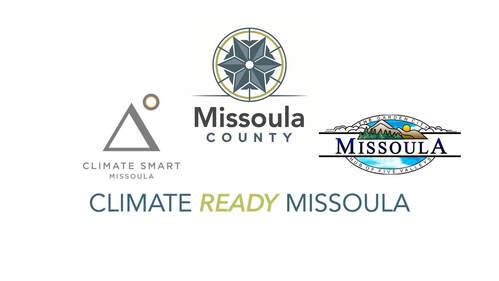The impacts of climate change will stress our ecosystems with hotter and drier summers, longer wildfire seasons, springtime flooding, and variability from year to year.
What can we do to prepare and build resiliency?
Our community identified several goals and strategies to address Missoula County's terrestrial and aquatic ecosystem vulnerabilities given climate change. Each goal and their corresponding strategies are presented below, and you can find strategy-specific implementation details by clicking on its "status."
Build understanding of forest, terrestrial and aquatic ecosystems and appropriate, site/landscape-specific management options that account for climate change.
Strategy |
Status (click for more information on implementation progress) |
Analyze current, historical, and projected conditions to identify and prioritize where to resist, accept, or facilitate site or ecosystem change, considering cultural values. |
IMPLEMENTING IN NEAR TERM - DETAILED PROGRESS REPORT COMING SOON. |
Create and implement watershed management plans based on climate projections that prioritize habitats to protect (include restoration strategies, human access considerations, and agricultural best management practices). |
PRE-PLANNING - DETAILED PROGRESS REPORT COMING SOON! |
Maintain and enhance connected habitat corridors. |
PRE-PLANNING - DETAILED PROGRESS REPORT COMING SOON! |
Reduce high severity wildfires and their impact in high risk areas/landscapes.
Strategy |
Status (click for more information on implementation progress) |
Increase prescribed fire and/or thinning, when and where appropriate. |
UNDERWAY - DETAILED PROGRESS REPORT COMING SOON! |
Implement best practices such as prescribed fire, streamside buffers, and support of beavers to increase watershed resilience to fire. |
UNDERWAY - DETAILED PROGRESS REPORT COMING SOON! |
Build a shared understanding of the realities of wildfire and our expectations of wildfire response.
Strategy |
Status (click for more information on implementation progress) |
Grow educational and outreach efforts within and between agencies, community partners, and public to build support for forest management options (including allowing natural fires to burn), considering divergent values (for example, Wildfire Adapted Missoula). |
UNDERWAY - DETAILED PROGRESS REPORT COMING SOON! |
Ensure ecological integrity during and after fire, and/or fire suppression activities.
Strategy |
Status (click for more information on implementation progress) |
Create a watershed reinvestment fund to support restoration after wildfire. |
NOT YET INITIATED |
